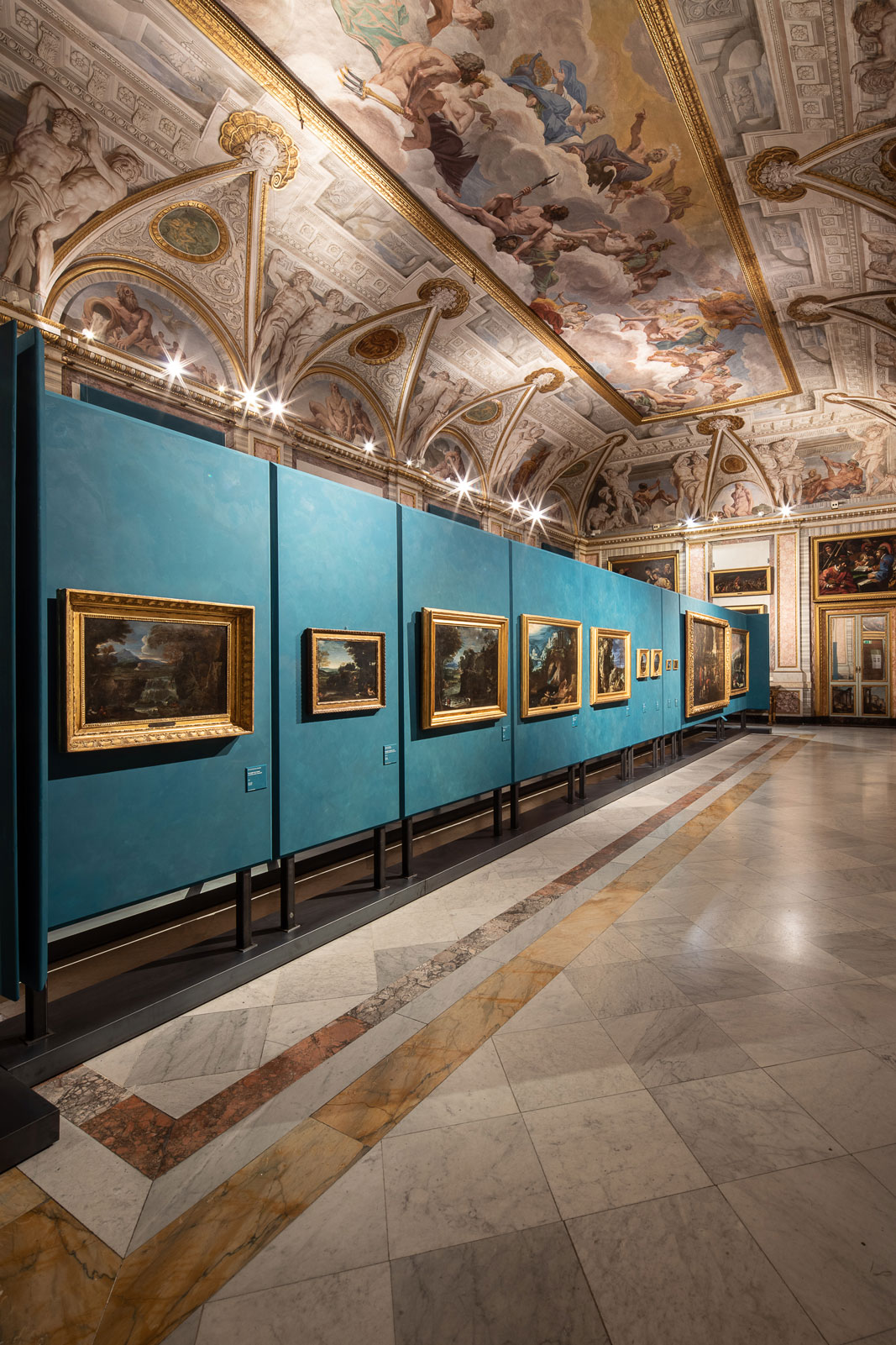Landscape painting in Rome
Guido Reni

1601-1614. Alone in a big city, but with eyes wide open. This is how Guido appears to us in his Roman years: he does not forge deep ties with other artists, although he is interested in the novelties of a context so rich in ideas and new languages. These were the years of intense debate on the “natural”, on the possibility of drawing and painting from life. One of the areas in which artists put themselves to the test in representing the surrounding world and the concept of imitation, already at the basis of the artistic theory of Humanism, was undoubtedly landscape painting, considered a specialization of the northern Europeans, but which in Rome, in the early seventeenth century, became a common area for experimentation. Annibale Carracci, Francesco Albani, Domenichino, and in particular two collaborators of Annibale, Pietro Paolo Bonzi and Giovan Battista Viola, all made a significant contribution to the success of landscape painting, at the service of the two great promoters and purchasers of this genre, the cardinals Pietro Aldobrandini and Odoardo Farnese. Guido also frequented the Flemish Paul Bril, who had been in Rome for over forty years, a figure of great importance in the exploration of rural themes and inventor of other “landscape subgenres”, such as coastal scenes, a particularly successful example of which is on show in the Galleria Borghese, the View of a Harbour, in the entrance to the picture gallery.
These are the premises for understanding the articulated, stimulating melting pot which welcomed Guido as he embarked on the painting of “country scenes”, and which the exhibition aims to evoke in the great Lanfranco Loggia by showing the many potential perspectives from which these works may be approached. We can start with the precursors in Emilia, such as Niccolò dell’Abate, followed by the Carraccis and onwards to the balanced, naturalistic works of Giovan Francesco Grimaldi, from the late 1670s. We can also observe how Paul Bril and his followers effected a meeting between the universal landscape of the North, a true catalogue of natural things, and the “conflictual and confused” scenes of the Italian tradition. The visitor will also have a chance to appreciate the advanced literary experiments of artists from Bologna, with the four tondi by Albani, commissioned by Scipione Borghese himself, or with a mature landscape by Domenichino, the Landscape with Silvia and Satyr, which displays an ongoing attraction for this genre developed many decades previously. Furthermore, in Domenichino’s astonishing Diana and the Nymphs, in the Helen and Paris Room a few steps from the Loggia, the landscape evolves into another, more grandiloquent language, and moves towards a compositional complexity in which the force of the human presence establishes a new code for a mythological scene set in nature, and for the connection between the world of images and that of the viewer, recalled within the painting by the looks and gestures of nymphs and shepherds.